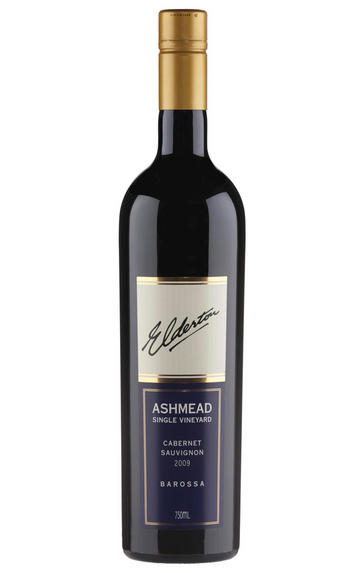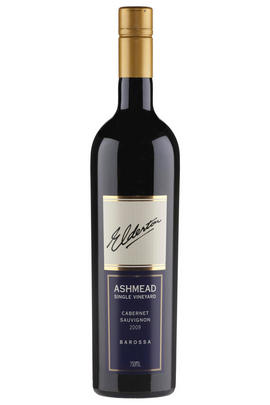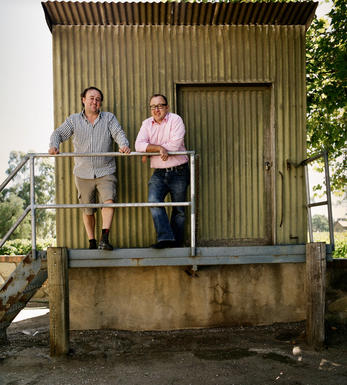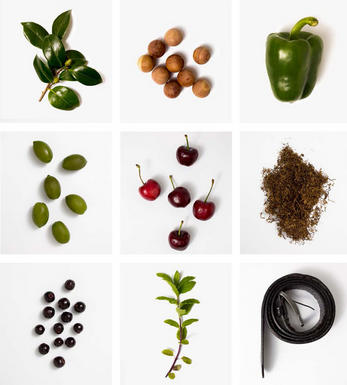
2014 Elderton, Ashmead Cabernet Sauvignon, Barossa Valley, Australia

Critics reviews
Lisa Perrotti-Brown - 30/06/2016
About this WINE

Elderton
Elderton was established in 1984 by Neil Ashmead - it is now run by Allister and Cameron Ashmead.
The winery is located on the banks of the Barossa Valley`s North Para River just outside the town of Nuriootpa. The fruit is drawn from 31 hectares of high-quality vineyards in the Barossa Valley. Aged between 40 and 102 years old, coupled with minimal irrigation, the vines produce rich, concentrated fruit showing off classic varietal flavours.
Its flagship wine is the Command Shiraz, which is made from small parcels of vines planted in 1939 and 1947. It is matured in American oak puncheons for 24 months and is one of the richest and concentrated examples of Barossa Shiraz to be found today.
Elderton released Tantalus to provide an easy drinking style of premium red at an every day drinking price. Tantalus was a figure from Greek Mythology who was punished for offending the Gods by being kept perpetually thirsty and hungry but tantalised by water and fruit he could see, but not quite reach.

Barossa Valley
Barossa Valley is the South Australia's wine industry's birthplace. Currently into its fifth generation, it dates back to 1839 when George Fife Angas’ South Australian Company purchased 28,000 acres at a £1 per acre and sold them onto landed gentry, mostly German Lutherans. The first vines were planted in 1843 in Bethany, and by the 1870s – with Europe ravaged by war and Phylloxera - Gladstone’s British government complemented its colonies with preferential duties.
Fortified wines, strong enough to survive the 20,000km journey, flooded the British market. Churchill followed, between the Wars, re-affirming Australia’s position as a leading supplier of ‘Empire wines’. After the Second World War, mass European immigration saw a move to lighter wines, as confirmed by Grange Hermitage’s creation during the 1950s. Stainless-steel vats and refrigeration improved the quality of the dry table wines on offer, with table wine consumption exceeding fortified for the first time in 1970.
Averaging 200 to 400 metres’ altitude, the region covers 6,500 hectares of mainly terra rossa loam over limestone, as well as some warmer, sandier sites – the Cambrian limestone being far more visible along the eastern boundary (the Barossa Ranges) with Eden Valley. Following a diagonal shape, Lyndoch at the southern end nearest Gulf St Vincent is the region’s coolest spot, benefiting from sea fogs, while Nuriootpa (further north) is warmer; hot northerlies can be offset by sea breezes. The region is also home to the country’s largest concentration of 100-year-old-vine Shiraz, Grenache and Mourvedre.
Barossa Valley Shiraz is one of the country’s most identifiable and famous red wine styles, produced to a high quality by the likes of Rockford, Elderton, Torbreck and Dean Hewitson. Grenache and Mourvèdre are two of the region’s hidden gems, often blended with Shiraz, yet occasionally released as single vineyard styles such as Hewitson’s ‘Old Garden’, whose vines date back to 1853. Cabernet Sauvignon is a less highly-regarded cultivar.
Wines are traditionally vinified in open concrete fermenters before being cleaned up and finished in American and French oak barrels or ‘puncheons’ of approximately 600 litres. Barossa Shiraz should be rich, spicy and suave, with hints of leather and pepper.

Cabernet Sauvignon
The most famous red wine grape in the world and one of the most widely planted.
It is adaptable to a wide range of soils, although it performs particularly well on well-drained, low-fertile soils. It has small, dusty, black-blue berries with thick skins that produce deeply coloured, full-bodied wines with notable tannins. Its spiritual home is the Médoc and Graves regions of Bordeaux where it thrives on the well-drained gravel-rich soils producing tannic wines with piercing blackcurrant fruits that develop complex cedarwood and cigar box nuances when fully mature.
The grape is widely planted in California where Cabernet Sauvignon based wines are distinguished by their rich mixture of cassis, mint, eucalyptus and vanilla oak. It is planted across Australia and with particular success in Coonawarra where it is suited to the famed Terra Rossa soil. In Italy barrique aged Cabernet Sauvignon is a key component in Super Tuscans such as Tignanello and Sassicaia, either on its own or as part of a blend with Sangiovese.


Buying options
Add to wishlist
Description
Elderton’s Ashmead block has consistently produced small parcels of excellent quality fruit. The palate is well balanced with a generous serving of black olives and shavings of rich dark chocolate. There is also an abundance of concentrated forest fruits and sweet spice. With 22 months in new French oak puncheons the tannins are well-structured yet supple, producing a wine that is drinking well now, but equally one that will blossom in the next three decades.
Katherine Dart MW, Wine Buyer
wine at a glance
Delivery and quality guarantee